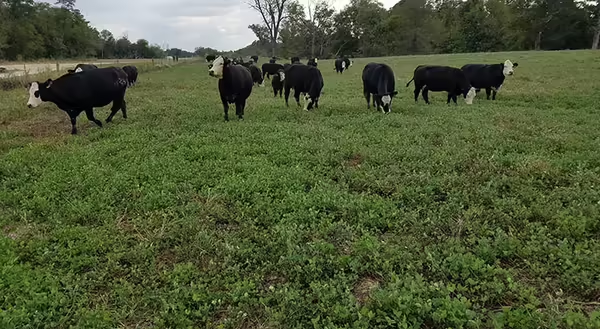
Recently I saw an old advertisement for hybrid seed corn. The two inbred parent ears of corn were small and low yielding, but the hybrid ear in the middle was robust and high yielding. Sure, this is not new news to you as a reader, but often simple messages, even old ones are worthwhile.
Obviously, hybrid seed corn is old news and other livestock species such as poultry and swine have had commercialized hybrid lines for decades. Also, they are much better at implementing maternal and terminal crosses for their designated purposes. Right in front of our eyes the dairy x beef cross has replaced a significant portion of straightbred Holstein fed cattle. So, are we doing more crossbreeding in the beef cattle herd?
I think now is a good time to look at your cattle herd and evaluate crossbreeding. Hybrid vigor or heterosis is largely defined as the difference in performance between the crossbred animal and it’s straightbred parents. Research in the late 1970’s used Hereford, Shorthorn, and Angus cattle to show that when one the breeds was crossed with another, the crossbred calf raised by a straightbred cow exhibited an 8.5% advantage in pounds of calf weaned per cow exposed. The crossbred calves raised by F1 crossbred cows captured both individual and maternal heterosis. This resulted in an increase of 23.3% more pounds per calf weaned. More research followed and continued to prove benefits in more lowly heritable traits such as calf survivability, calf weaning weights, cow fertility, and cow longevity.
Often breed complementarity is heavy component of the crossbreeding discussion. It is valuable to study breed strengths and weaknesses, but there is a lot of variation within breed. So, focus on desirable traits no matter the breed. Variation within breed for frame size, milk production, udder quality, and functional traits must be identified and selected to meet your herd goals. Any old bull is not a good approach. The amount of data available to make informed decisions on good bulls within a given breed is higher now than ever before.
I would encourage producers to implement crossbreeding that can work for you. Often times, maximum heterosis is unattainable in a small herd. Thus, focusing on a simple rotation or implementation of hybrid bulls may still allow heterosis to positively influence herd production and economics. It doesn’t always have to be perfect to be effective.
Heterosis is worth it when it comes to the cow business. Select the right type and size, proper milk production for your feed resource, and desired hardiness for your climate is important. There are good genetics and poor genetics within all breeds. Pick the good ones and crossbreed them.
*Originally published in Progressive Cattle